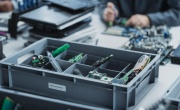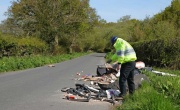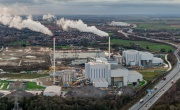LEGO launches bioplastic bricks

One of the most ubiquitous and best-loved toys of all time, LEGO is also heavily reliant on plastic. With over 60 billion pieces created every year (equivalent to eight bricks for every person on the planet), around three quarters of the company’s carbon footprint stems from the oil used to make its products.
Now, however, LEGO is laying the foundations for a more sustainable future, with the launch of a new set of pieces made from a sugar cane-based bioplastic, set to hit the shelves by the end of 2018.
The company, which today (6 March) admitted it has produced “too much” stock, causing its first drop in profits for 13 years, will be making the ‘botanical’ elements of LEGO sets, meaning trees, leaves and bushes, from a biopolyethylene created using sugar cane, sourced sustainably in accordance with guidance from the Bioplastic Feedstock Alliance. The majority of LEGO bricks for the time being will continue to be made from ABS (acrylonitrile butadiene styrene), a durable plastic based on crude oil.
While ‘botanical’ pieces only represent one to two per cent of the total plastic elements produced by the LEGO Group, the long-term vision for the company is to have all pieces made from the bioplastic by 2030, a switch that could cut the company’s carbon footprint by around 70 per cent, according to Stephen Mayfield, Director of the California Center for Algae Biotechnology.
Tim Brooks, LEGO’s Vice President of Environmental Responsibility, commented: “At the LEGO Group we want to make a positive impact on the world around us, and are working hard to make great play products for children using sustainable materials.
“We are proud that the first LEGO elements made from sustainably sourced plastics are in production and will be in LEGO boxes this year. This is a great first step in our ambitious commitment of making all LEGO bricks using sustainable materials.”

Roar Tranbaek, LEGO Group Press Officer, told Fast Company magazine that the company recycled the equivalent of 70 million bricks in 2014, either grinding them down into new bricks or using them for fuel, but remarked that making LEGO pieces out of recycled plastic on a larger scale was not an option due to the mixed provenance of recycled materials: “We can’t compromise on the product quality or product safety – that means we know exactly what material we’re using and what’s inside of it. The challenge with recycled materials from outside is that we don’t know the ingredients.”
The company, which ended its multi-million pound marketing deal with oil giant Shell in 2014 after concerted efforts by Greenpeace campaigners, has been working towards improving its environmental credentials for some time, announcing in 2015 a one-billion Danish krone (almost £120 million) investment in a new Sustainable Materials Centre, tasked with finding and implementing sustainable materials for LEGO products and packaging.
The LEGO Group is also working towards a target of zero waste by 2030, and last year achieved its aim to balance 100 per cent of its energy use with energy from renewable sources, three years ahead of schedule, through investment in two offshore wind farms, one of which is off the coast of Liverpool.








